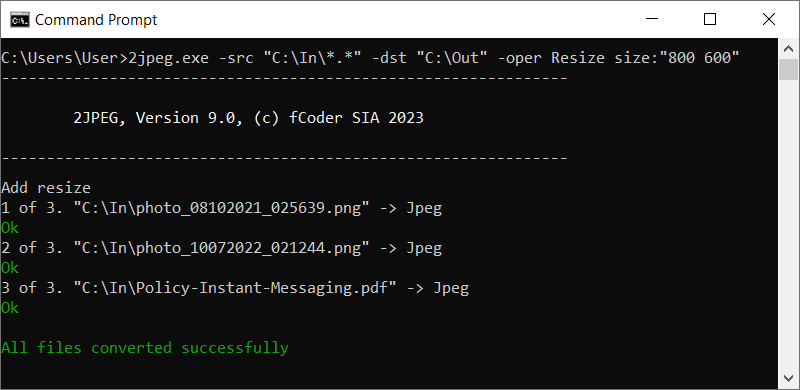Convert your image to any format. Get more information on the “Top 1 Guide To Image-to-DIB Conversion.”
The Device-Independent Bitmap (DIB) format is important in the field of digital imaging since it is compatible with a wide range of devices and applications. Software development, graphics programming, and image processing jobs might benefit from DIB’s standard intermediary format for bitmap image transfers between computers.
Convert Image To DIB
Get more information on the “Top 1 Guide To Image-to-DIB Conversion.”
Nevertheless, image-to-DIB converters are specialist tools that are frequently needed in order to convert photos to the DIB format. We will examine image-to-DIB converters in detail in this extensive tutorial, looking at their features, kinds, and uses.
Top 1 Guide To Image-to-DIB Conversion
Comprehending the DIB Format
The basics of the DIB format must be understood before diving into image-to-DIB converters. As a component of the Windows Graphics Device Interface (GDI), Microsoft created the versatile bitmap image format known as DIB. It is composed of a bitmap information header that defines the image’s properties, including width, height, color depth, and compression technique, and a bitmap file header that follows.
With support for multiple color depths—monochrome, grayscale, indexed color, and true color—DIB is a versatile tool that may be used for a variety of tasks, such as printing, graphic design, and icon generation.
Get more information on the “Top 1 Guide To Image-to-DIB Conversion.”
Types of Converters from Images to DIBs
There are various types of image-to-DIB converters, and each one has special features and capabilities designed to meet the needs of the user. The primary categories are as follows:
Desktop Programs
Users can install desktop image-to-DIB converters as stand-alone programs on their PCs for offline use. When compared to online applications, these converters usually have more sophisticated capabilities like batch processing, adjustable conversion parameters, and support for a large number of input and destination formats. A few desktop programs that can be used to convert photos to DIB are GIMP, IrfanView, and Adobe Photoshop.
One of the best programs for altering and manipulating photographs is Adobe Photoshop, which has built-in capability for exporting images to the DIB format. Photoshop gives users the ability to convert photos while maintaining complete control over the conversion parameters, color profiles, and image properties, thanks to its extensive toolkit. Before exporting their photos to the DIB format, users can also apply a variety of tweaks, filters, and effects, guaranteeing the best possible results for a range of image types.
Get more information on the “Top 1 Guide To Image-to-DIB Conversion.”
The open-source GIMP (GNU picture Manipulation Program) has features for picture manipulation and conversion that are comparable to those of Photoshop. Batch processing, layer management, and a multitude of file formats—including DIB—are all supported by GIMP. The vast array of tools and plugins available in GIMP allow users to tailor their conversion process and accomplish their desired outcomes. To enable DIB compatibility, GIMP might need further plugins or extensions.
Lightweight and adaptable, IrfanView is an image viewer and converter that works with many different file formats, including DIB. With its intuitive interface and rapid processing speed, IrfanView enables users to efficiently and rapidly convert photos to DIB format. The program is appropriate for both home and business usage, providing batch conversion, thumbnail viewing, and basic editing tools. Get more information on the “Top 1 Guide To Image-to-DIB Conversion.”
Utilizing Command-Line Tools
There are command-line image-to-DIB converters that can be used for batch processing operations or integrated into scripts for users who are accustomed to using command-line interfaces (CLI). With the effectiveness and adaptability of these solutions, users may automate the conversion process and alter settings to suit their requirements. XnConvert and the convert command from ImageMagick are two well-known command-line converters.
A picture can be converted to DIB and other formats using the command-line interface provided by the well-known open-source image editing tool ImageMagick. ImageMagick’s wide range of features and batch processing capability make it simple for users to handle challenging image manipulation tasks. With shell scripts or programming languages like Python, users can design unique conversion scripts, apply filters and transformations, and automate the entire process.
Get more information on the “Top 1 Guide To Image-to-DIB Conversion.”
XnConvert is a command-line utility that is lightweight and strong, especially for manipulating and converting large images in bulk. XnConvert’s user-friendly interface and wide range of supported formats, including DIB, allow users to swiftly and effectively convert massive amounts of photos. Before completing the conversion process, users can build conversion presets, apply filters and effects, and preview the final product.
For advanced users and developers, command-line image-to-DIB converters are perfect because they offer flexibility, scalability, and automation possibilities. To use them successfully, though, they could have a higher learning curve and need to be conversant with command-line interfaces and scripting languages. Get more information on the “Top 1 Guide To Image-to-DIB Conversion.”
Conclusion
Image-to-DIB converters are essential tools for converting photos to the DIB format, which allows users to take advantage of bitmap images’ in a variety of workflows and applications. There are several solutions available to fit your unique needs and preferences, whether you want command-line tools for automation or desktop applications for advanced capabilities.
Users may select the ideal tool for their image conversion chores and realize the full potential of the DIB format in their digital projects by being aware of the various types of converters and their corresponding functionalities.
Get more information on the “Top 1 Guide To Image-to-DIB Conversion.”
